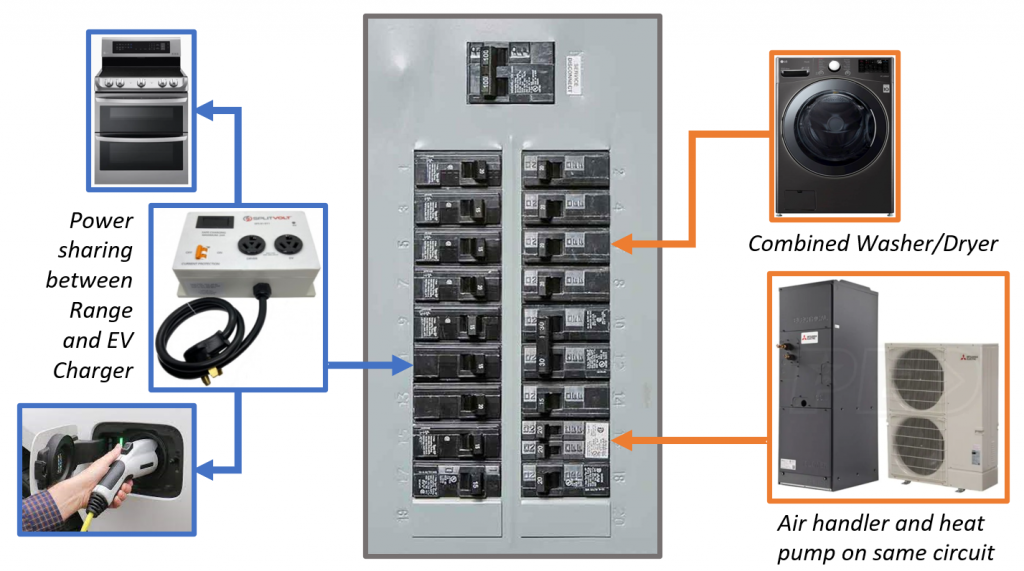Service Upgrades for Electrification Retrofits
The City of Oakland has been legally directed to suspend the requirement that all newly constructed buildings be all-electric as per Oakland Municipal Code 15.37

Example of panel optimization, courtesy of Redwood Energy
Going all-electric may require increasing your electric service or panel size to accommodate greater electrical loads from appliances and electric vehicles. In single-family homes, if the panel is 100 amps or greater, existing electrical service may be sufficient with panel optimization, making efficient use of existing service and breakers with load management technology and appropriate appliance selection. Panel optimization not only avoids added costs from electrification, it also enables faster and more widespread building decarbonization with existing electrical infrastructure.
Determining the necessary panel size for your home is the consumer's decision, not PG&E's. If the consumer determines electrical service needs to be increased, PG&E's Added Load process must be followed.
On 9/7/22, the cities of Oakland and San Francisco held a workshop on electrical service upgrades for single-family buildings with PG&E and Tom Kabat. Minute marks for the recording are below listed below.
A multifamily and commercial buildings version of the workshop was held on 9/28/22 featuring John Neal from the Association for Energy Affordability and PG&E.
| Topic |
Minute Mark |
| Oakland Presentation |
2:40 |
| San Francisco Presentation |
10:25 |
| Avoiding Service Upgrades: Panel Optimization with Tom Kabat |
20:50 |
| Electric Service Planning and PG&E's Added Load Process with Khalil Johnson and Nick Souza |
37:15 |
| Impacts of Electrification on Primary & Secondary Distribution |
42:30 |
| Electric Service Upgrade Triggers |
45:30 |
| Added Load Process, including PG&E vs. customer responsibilities, costs, and timelines |
46:00 |
| Gas Disconnection Process |
59:50 |
| Q&A |
1:05:00 |
| Clarification on total time for Added Load Process |
1:06:30 |
| Next National Electric Code giving more flexibility for giving software to manage loads as alternative to upsizing panels |
1:17:50 |
| Is there a portion of transformer upgrade costs that would have to be paid by customers? (distribution vs. service facilities) |
1:22:25 |
| Who is responsible for gas line removal and how much would it cost a homeowner to remove a gas line if PG&E isn't paying for it |
1:28:00 |
| What are the specific costs of the PG&E portion of service upgrades |
1:31:00 |
| PG&E internal data about size of panels and customer gas connections |
1:34:30 |
| Richard Y's project example |
1:40:30 |
| More explanation of NEC 22.87 and Tom Kabat's electrical calculator |
1:48:00 |
| Reference to Greenbook section 2, p. 2-38, figure 2-22: if upgrading existing electric service, measure 3' radially from regulator vent |
1:52:30 |
Resources